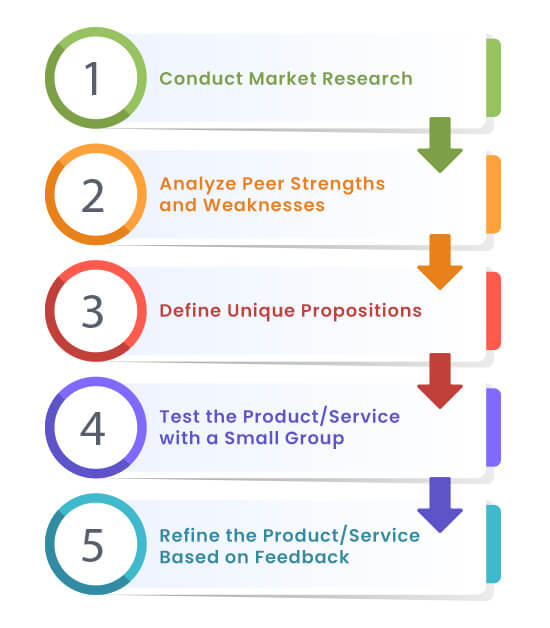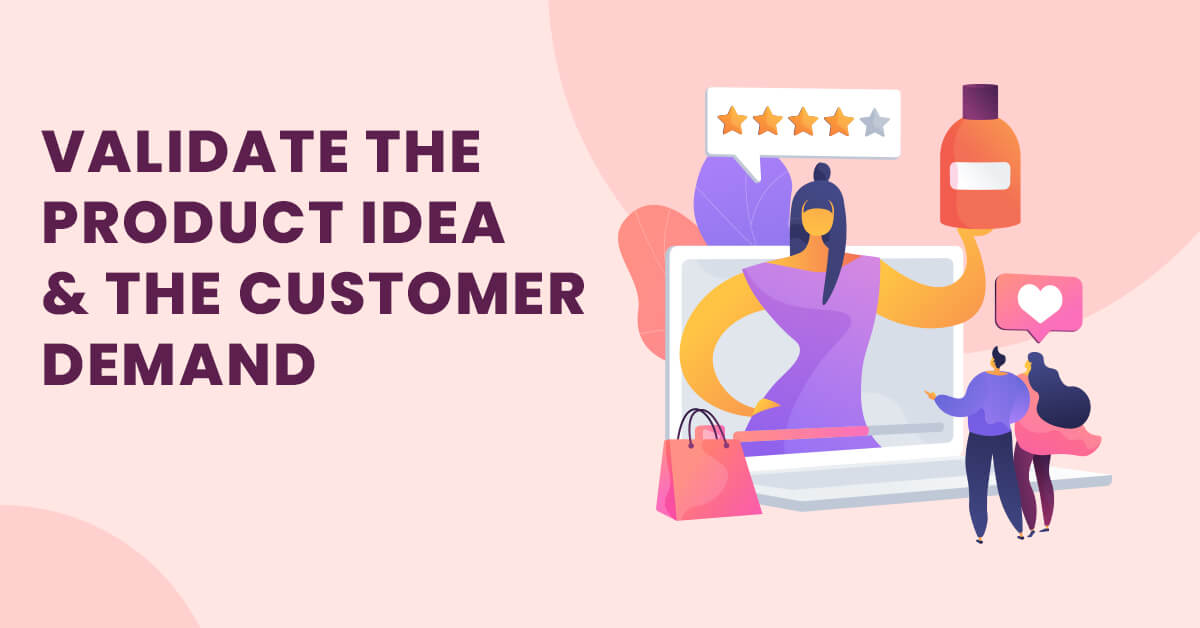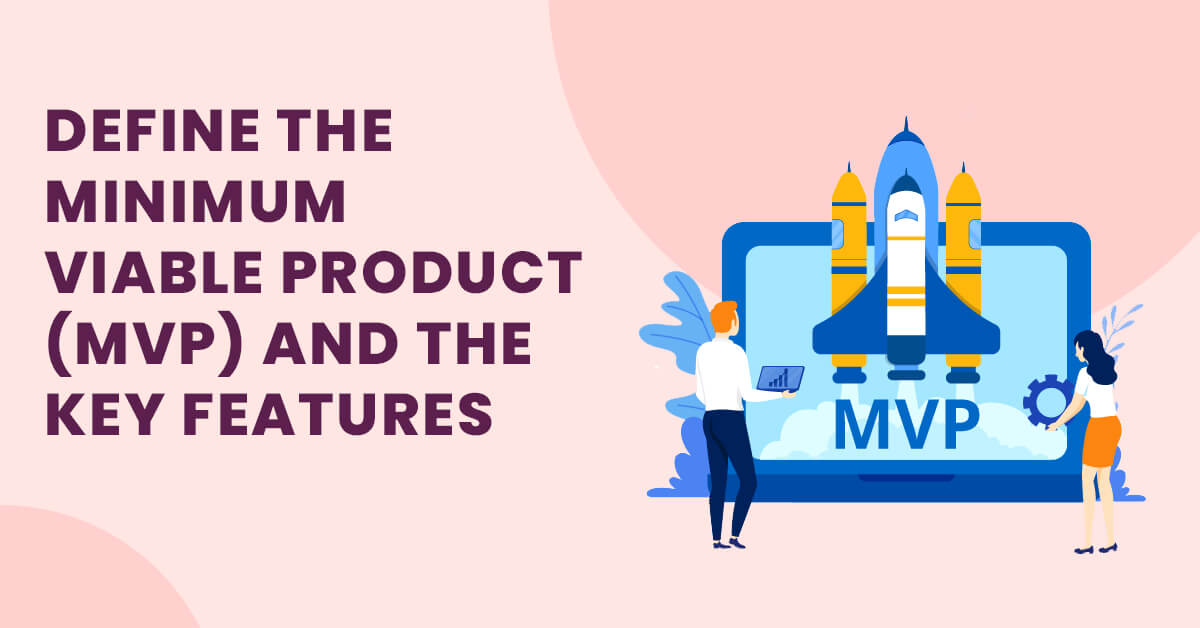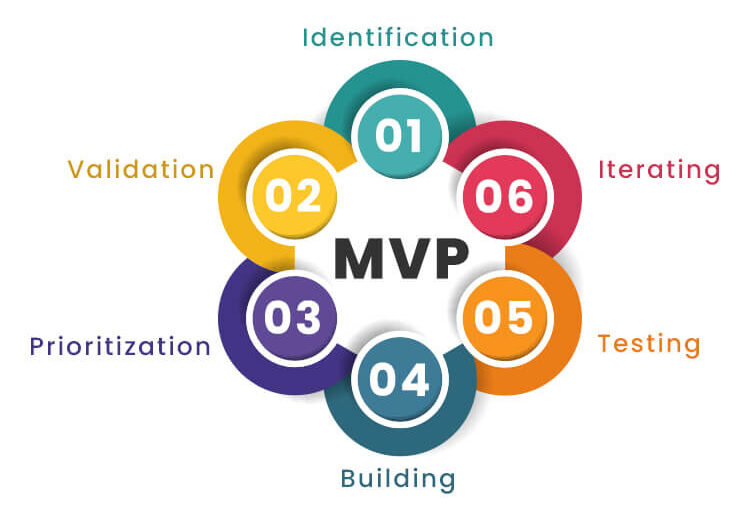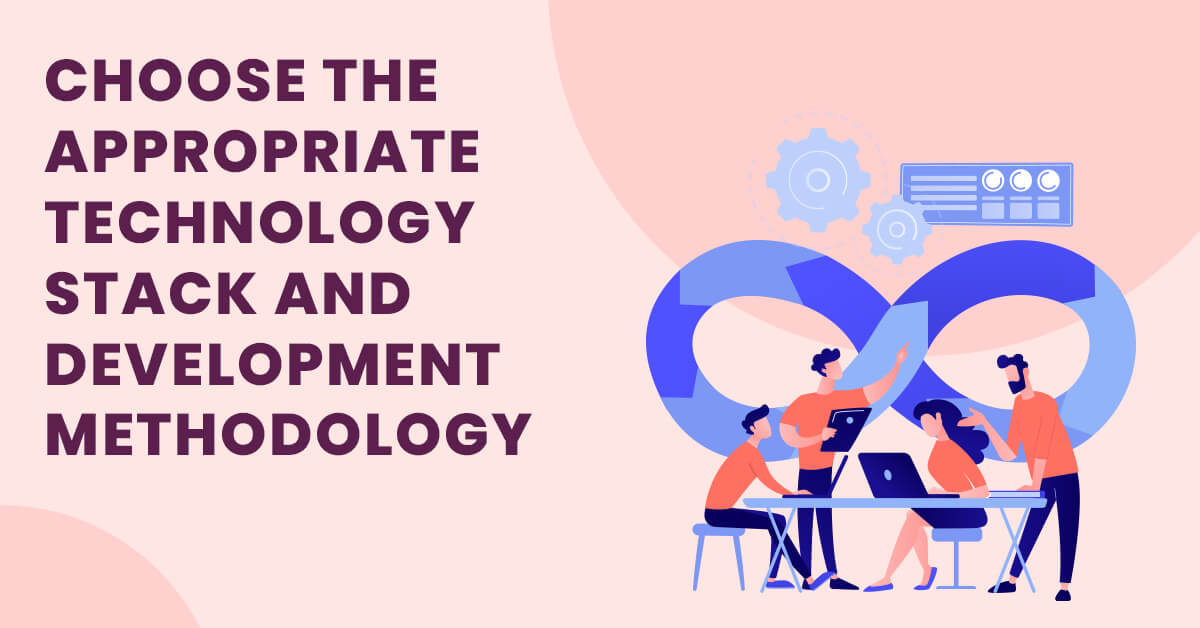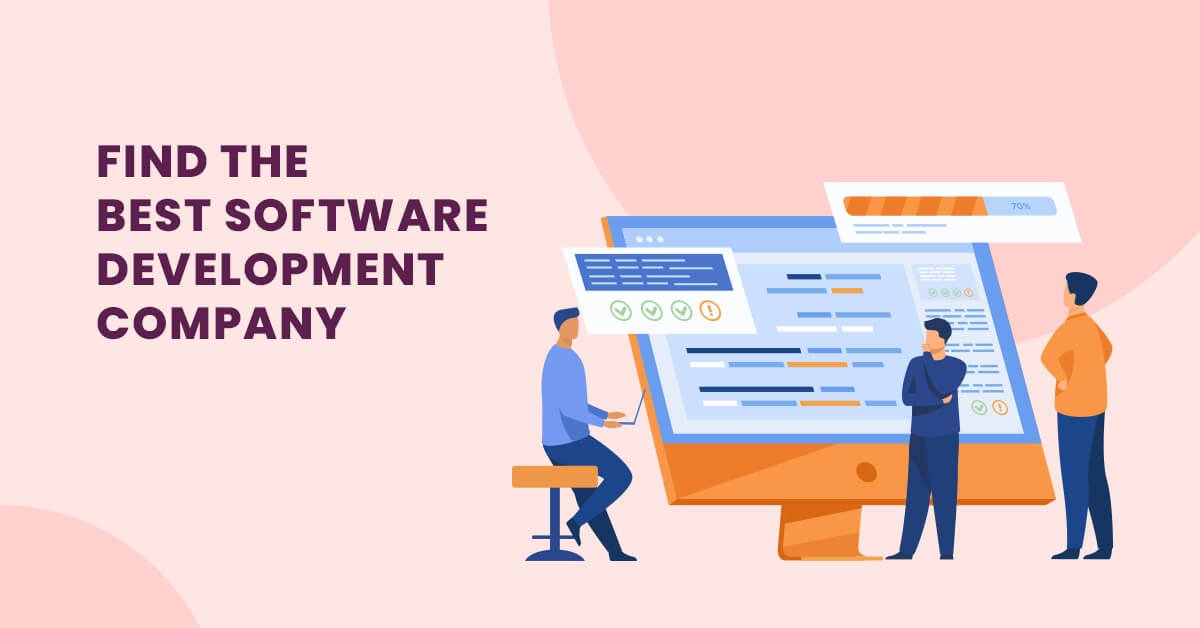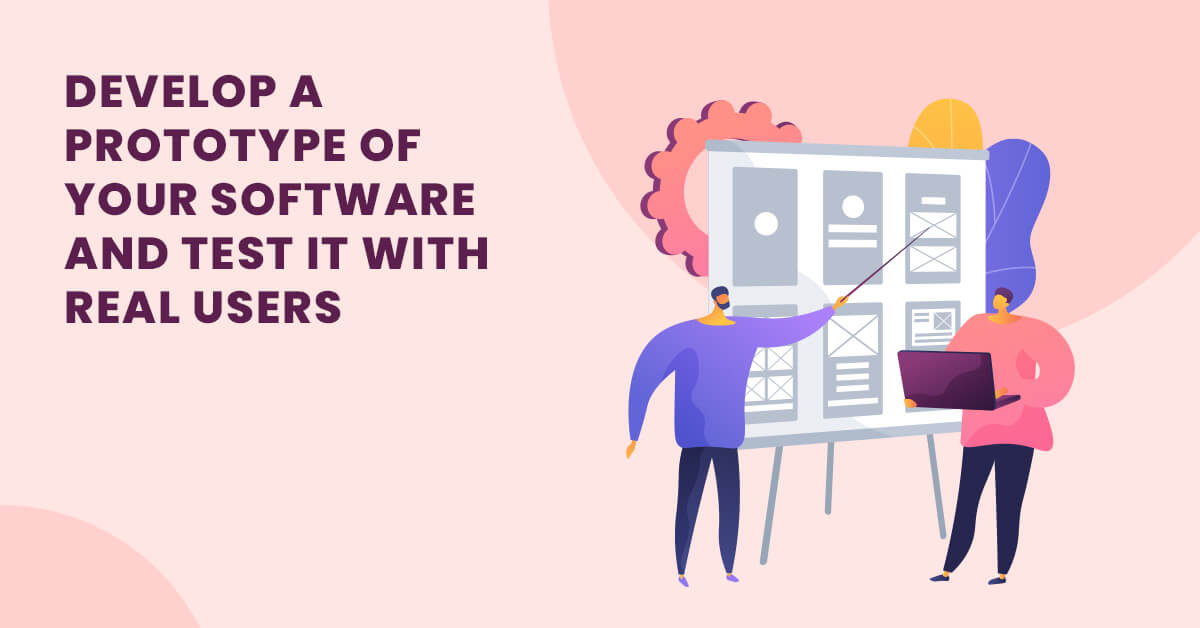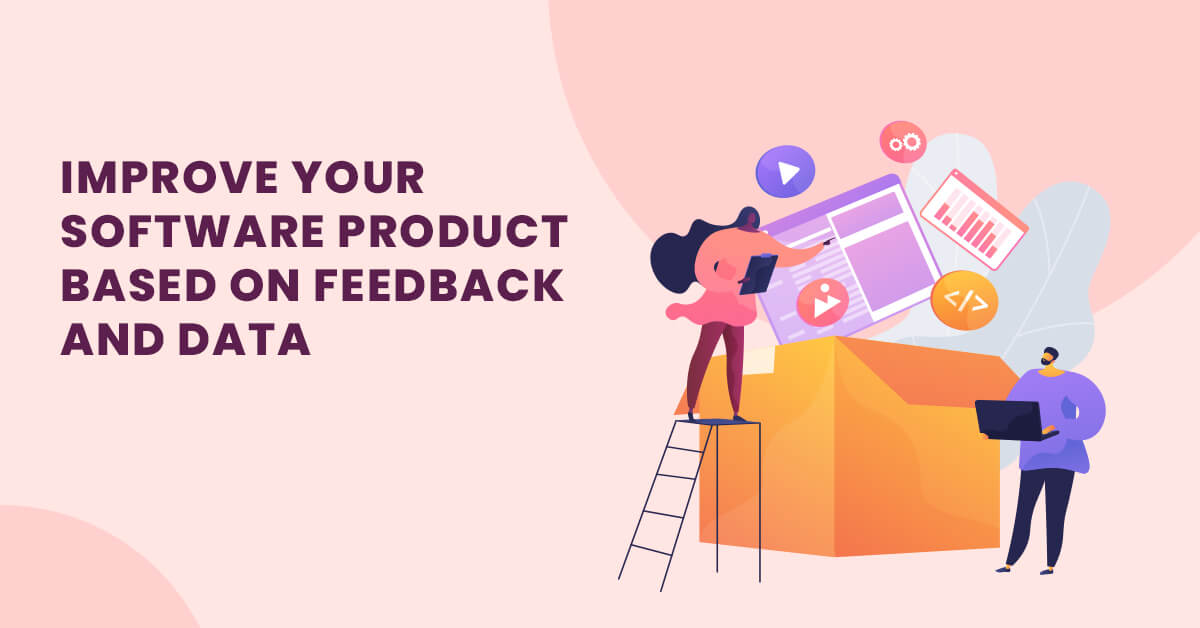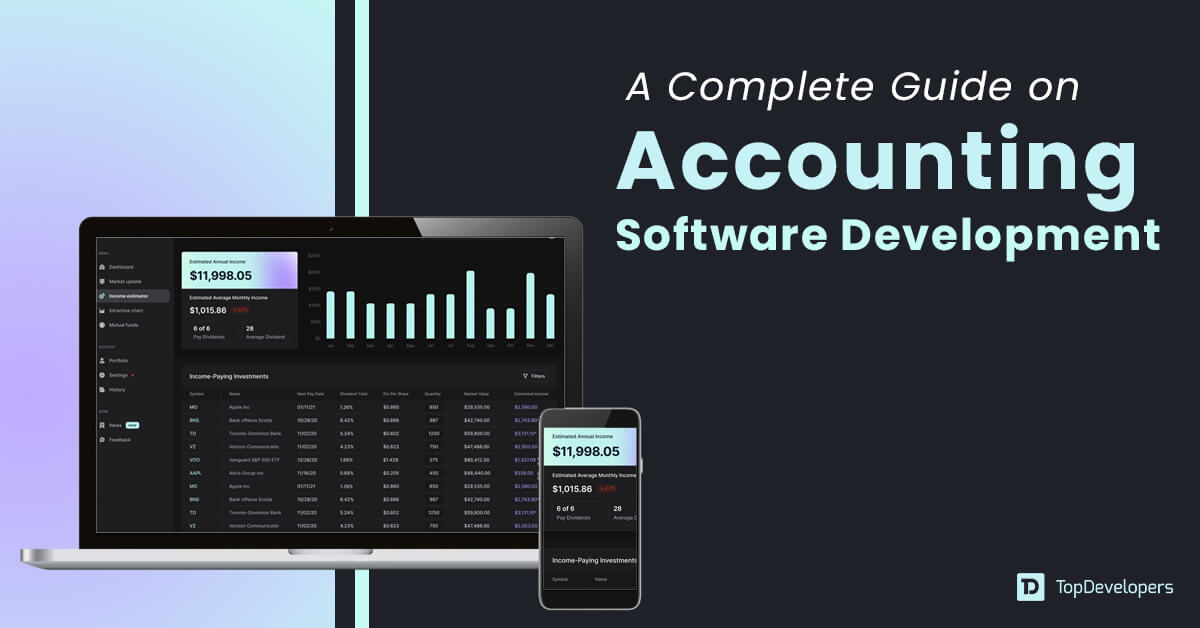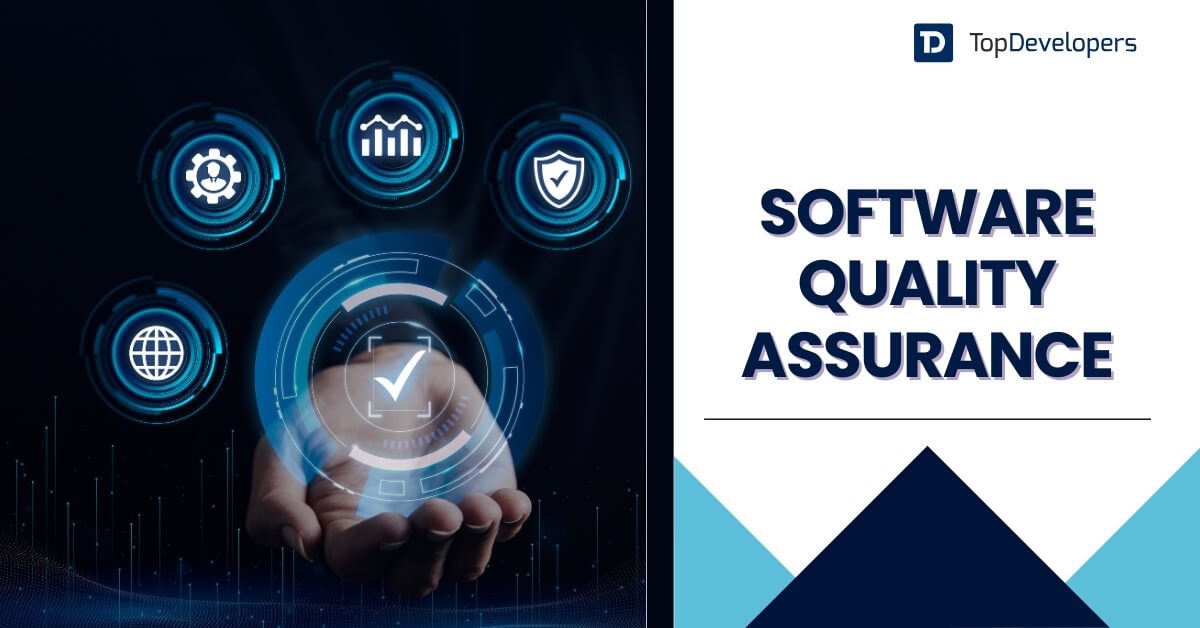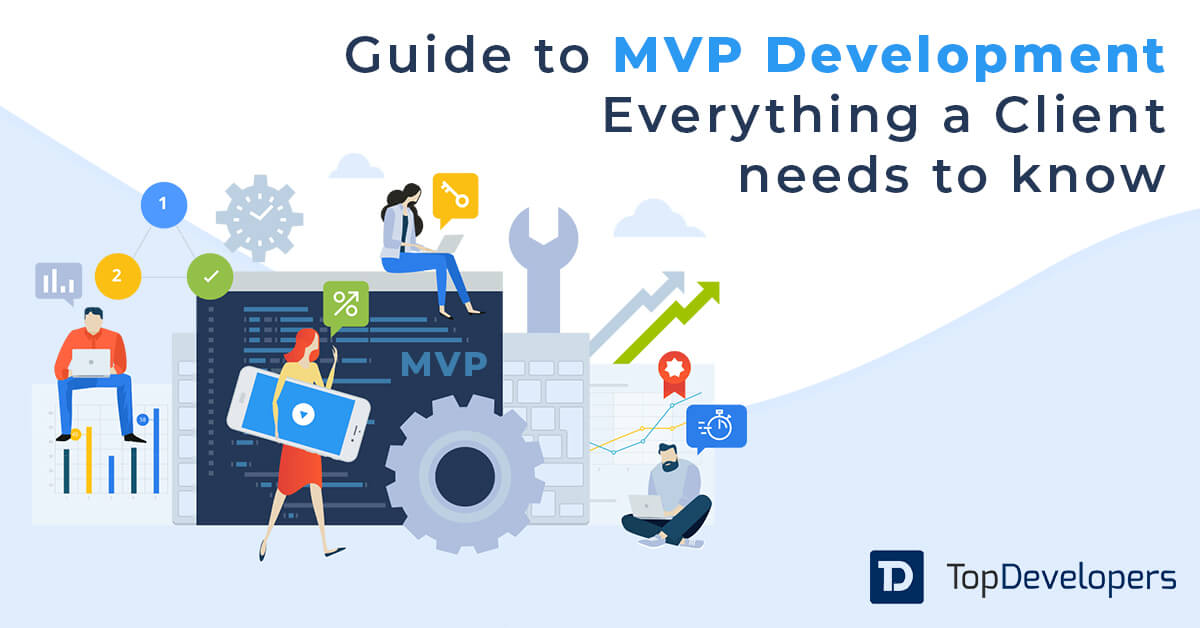
Software is an integral part of any startup because it can help to automate, optimize, and scale various aspects of the business. Customized software development can enable startups to create innovative products or services and, therefore, reach new customers.
Software are known to improve efficiency and productivity along with reducing costs and risks. Startups, with precise software products at their side, can gain a competitive edge in the market improving their chances of becoming renowned unicorns. Software product development for startups can also facilitate communication, collaboration, and feedback among internal teams, clients, and concerned stakeholders.
Table of Contents
- What is Software Product Development?
- Why Does Software Product Development Matter for Startups?
- Creating Market-Fit Products for Startups
- Building Competitive Advantage Through Software Development
- Cost-Effectiveness and Scalability for Startups
- Supporting Growth and Innovation
- Building Trust with Investors and Customers
- Enabling Fast Iteration and Feedback
- Enhancing Customer Experience
- Reducing Time-to-Market
- Risk Mitigation and Minimizing Failures
- Best Practices in Software Product Development for Startups
- Start with a Clear Product Vision
- Focus on Building an MVP (Minimum Viable Product)
- Follow the Agile Development Methodology
- Prioritize User-Centered Design
- Validate Ideas Through Prototyping
- Ensure Robust Testing and Quality Assurance
- Implement Scalable Architecture
- Stay Focused on Core Features
- Regularly Gather User Feedback
- Maintain Strong Communication Within Your Team
- Protect User Data and Privacy
- How Much Does Software Product Development Cost for Startups?
- Things to Mind for Startup Entrepreneurs for Software Product Development
- Identify the Gray Area and Target Market
- Validate the Product Idea and the Customer Demand
- Define the Minimum Viable Product (MVP) and the Key Features
- Choose the Appropriate Technology Stack and Development Methodology
- Find the Best Software Development Company
- Develop a Prototype of your Software and Test it with Real Users
- Improve your Software Product based on Feedback and Data
- Launch the Product and Scale it up with Marketing
- The Importance of Software Product Development for Startups
- FAQs regarding Software Product Development
- Why is it important to have a software product development plan for startups?
- What is the difference between software product development and software product management?
- What is the difference between the software product development process and the software development lifecycle (SDLC)?
- How long does the startup software product development process usually take?
- What are the steps of a software product development process?
- What are the different software product development methodologies?
- How can a startup ensure a secure software development environment?
- How much does software product development cost for startups?
- What are the best practices in software product development for startups?
- What are the common software development services a startup can use?
What is Software Product Development?
Software product development is the structured process of creating, enhancing, or reimagining software solutions to address specific market needs. Whether it’s developing an entirely new product, upgrading an existing one, or refining a development methodology, this process aims to deliver innovation and value to customers.
By introducing newly developed software products, businesses can transform the market, improve customer satisfaction, and provide users with a superior experience. Innovation and development not only lead to cutting-edge solutions but also pave the way for enhanced business growth and customer loyalty.
Why Does Software Product Development Matter for Startups?
For startups, software product development is a crucial step in turning innovative ideas into successful businesses. A well-developed product can differentiate a startup in a competitive market, attract customers, and secure investment. This section highlights why software product development is essential for achieving startup growth and long-term success.
Creating Market-Fit Products for Startups
Software product development helps startups create products that meet specific market needs. It ensures the product resonates with the target audience. By focusing on what customers want, startups can deliver valuable solutions. This leads to better product-market fit and higher chances of success.
Building Competitive Advantage Through Software Development
Developing software products gives startups a competitive edge. It allows them to innovate and differentiate from competitors. A unique and well-built product sets them apart in the market. This advantage helps attract customers and investors, enabling startups to grow and thrive.
Cost-Effectiveness and Scalability for Startups
Effective software development can be cost-efficient for startups. Scalable solutions grow with the business, reducing additional costs. Cloud services and lean development help startups save money. These strategies allow startups to expand quickly without compromising quality or exceeding budget.
Supporting Growth and Innovation
Software product development enables continuous growth and improvement. Startups can iterate on their product based on user feedback. As the business grows, the software can evolve to meet new challenges and opportunities. Continuous innovation ensures that the product stays relevant in a changing market.
Building Trust with Investors and Customers
A well-developed product builds trust with investors and customers. It shows that the startup is serious and capable. Investors are more likely to fund businesses with clear, functional products. Customers will trust a startup that consistently delivers high-quality solutions.
Enabling Fast Iteration and Feedback
Agile development allows startups to release and test product versions quickly. This helps gather valuable user feedback early. Fast iteration ensures the product meets customer needs before a full-scale launch. This flexibility allows startups to adapt quickly and improve their product.
Enhancing Customer Experience
Great software development focuses on user-friendly design and functionality. A positive user experience keeps customers engaged and satisfied. When the product is intuitive and solves problems, users are more likely to return. This enhances customer loyalty and promotes long-term success.
Reducing Time-to-Market
Startups need to bring products to market quickly. Software product development speeds up this process. By using efficient development methods, startups can launch sooner. A faster time-to-market allows them to capture market share before competitors.
Risk Mitigation and Minimizing Failures
Early testing and prototyping help identify potential issues before they become big problems. Software development reduces the risk of failure by validating ideas early. Startups can quickly adjust their product based on real user feedback. This minimizes financial risk and improves the likelihood of success.
Best Practices in Software Product Development for Startups
Building a software product for a startup is a challenging yet rewarding process. Following best practices helps ensure the product meets market needs, stays on track, and delivers value to customers. In this section, we outline the key strategies that startups should implement for efficient and effective product development.
Start with a Clear Product Vision
Before you begin development, define a clear vision for your product. Understand the problem you’re solving. Knowing your product’s purpose ensures that every feature aligns with your goals. This vision helps guide the entire software development process.
Focus on Building an MVP (Minimum Viable Product)
Build an MVP to test your core idea. It should have only essential features to meet the target audience’s needs. This allows you to get feedback early and save resources. You can then iterate and improve based on real user input.
Follow the Agile Development Methodology
Adopt agile development to work in short cycles, called sprints. This approach allows you to adapt quickly and efficiently. It helps you prioritize tasks and deliver updates fast, improving product quality over time.
Prioritize User-Centered Design
Always keep the user experience (UX) in mind. Design your software solution with simplicity and ease of use in mind. A product that’s intuitive to use will drive customer satisfaction and engagement. Regularly test with real users to identify pain points and improve the design.
Validate Ideas Through Prototyping
Before building the final product, create a prototype. Prototypes allow you to test ideas and gather feedback without investing too much time or money. It’s a low-cost way to verify your assumptions and refine the product before development.
Ensure Robust Testing and Quality Assurance
Software testing is key to delivering a reliable product. Make sure to test the software thoroughly at every stage. This includes unit tests, integration tests, and user acceptance testing (UAT). Identify and fix bugs early to ensure smooth functionality.
Implement Scalable Architecture
Design your product architecture for growth. Build with scalability in mind so it can handle increasing users and data. Using cloud services and microservices architecture allows the product to scale smoothly as your startup grows.
Stay Focused on Core Features
Focus on the essential features that provide the most value to your users. Avoid adding unnecessary features that could complicate development. Keeping it simple ensures faster development, lower costs, and a better user experience.
Regularly Gather User Feedback
Continuously gather feedback from your users. Use surveys, reviews, and beta tests to understand their needs and concerns. Iterate your product based on this feedback to enhance user satisfaction and keep the product relevant.
Maintain Strong Communication Within Your Team
Effective communication is essential for successful product development. Regular meetings and updates help keep everyone aligned. This ensures that development stays on track and reduces the chances of errors or misunderstandings.
Protect User Data and Privacy
As a startup, prioritize security from the start. Implement strong security measures to protect user data. Ensure compliance with relevant data protection regulations, such as GDPR or CCPA, to build trust with your users.
How Much Does Software Product Development Cost for Startups?
Understanding the cost of software product development is essential for startups planning their budgets. The cost depends on several factors, including the product’s complexity, features, and development timeline. This section breaks down the key elements that influence the cost and provides a general overview of what startups can expect.
Complexity of the Product
The more complex the product, the higher the development cost. A simple app with basic features costs less than a complex platform with advanced functionality. Complex products require more time, specialized skills, and resources.
Features and Functionality
The features you want to include directly impact the cost. A product with essential features like user authentication and basic dashboards will be cheaper than one with advanced features like AI, integrations, or custom reporting. Each additional feature adds to the cost.
Software Development Team Location
The location of your dedicated software development team influences the cost. Software development companies in countries with higher living costs typically charge more. For example, software developers in the U.S. or Western Europe may cost more than teams in Eastern Europe or India.
Design and User Experience
Investing in great design and UX can raise costs but will enhance user satisfaction. High-quality, custom design work requires experienced designers and more time. However, a well-designed product can lead to higher user engagement and retention.
Technology Stack
The choice of technology stack plays a role in software development costs. Popular technologies like React or Node.js might cost less to develop because they have large developer communities. Niche or custom-built technologies can increase costs due to limited expertise and resources.
Development Methodology
Using an agile methodology, which involves iterative development, can be more cost-effective. Agile allows for flexibility and adjustments based on feedback, reducing the chance of costly mistakes. Traditional waterfall development tends to be less flexible and can lead to higher costs if requirements change.
Testing and Quality Assurance
Quality assurance (QA) is essential but adds to the development cost. Testing helps identify bugs and usability issues early, which can save money in the long run. Investing in QA ensures a more reliable product and reduces future maintenance costs.
Maintenance and Updates
The initial cost of development doesn’t cover ongoing maintenance. Software needs regular updates, security patches, and bug fixes. Maintenance costs can add up over time, especially as the product scales.
Timeframe and Deadlines
If you need the product delivered quickly, expect to pay a premium. Tight deadlines require more developers and faster work, which can increase the overall cost. Allowing for a longer development period can help reduce costs by spreading the workload.
Things to Mind for Startup Entrepreneurs for Software Product Development
Software product development is a complex and thought-provoking process that requires careful planning and execution. Startups should be careful with software product development because they need to validate their conventions, deliver value to their clients, and adapt to changing market trends.
Here are the steps to carefully follow in order to get a flawless software product for your business –
Identify the Gray Area and Target Market
One of the challenges for startups is to strike the right area between serving a niche market and escalating to a broader customer base. A gray area is a segment of potential customers that are not clearly defined or addressed by the current offerings of the startup or its competitors.
On the other hand, a target market is a group of customers that have a specific need or problem that the startup can solve with its product or service.
To identify the gray area and the target market for a startup, the overall steps are mentioned here. Later we have explained some components in detail:
- Conduct market research to understand the needs, preferences, and behaviors of different customer segments.
- Analyze the strengths and weaknesses of the existing competitors and identify any gaps or opportunities in the market.
- Define the unique value proposition of the startup and how it differs from or complements the existing solutions.
- Test the product or service with a small group of early adopters and collect feedback on their satisfaction and willingness to pay.
- Refine the product or service based on the feedback and determine the optimal pricing and positioning strategy.
- Scale up the marketing and sales efforts to reach a larger and more diverse customer base.
Validate the Product Idea and the Customer Demand
One of the most important steps for a startup is to validate the software product idea and the customer demand before investing time and money.
There are several methods to do this, such as:
- Conducting market research and competitor analysis to identify the existing problems and gaps in the market.
- Creating a minimum viable product (MVP) that solves the core problem for a specific segment of customers and testing it with them.
- Collecting feedback and metrics from the MVP users and analyzing them to measure the product-market fit and customer satisfaction.
- Iterating and improving the product based on the feedback and metrics until it reaches a desirable level of performance and value.
Define the Minimum Viable Product (MVP) and the Key Features
The minimum viable product (MVP) is a product version of software that has enough features to satisfy early customers and provide feedback for future development. The key features of a startup are the ones that solve the main problem or pain point of the target market, differentiate the product from competitors, and create value for the customers.
To define the Software MVP and the key features, a startup should follow these steps:
- Identify the customer segment and the problem they have
- Validate the problem and the solution with customer interviews and surveys
- Prioritize the software product features based on their importance and feasibility
- Build a prototype or a mock-up of the MVP with the key features
- Test the MVP with real customers and collect feedback
- Iterate and improve based on the feedback and data
Choose the Appropriate Technology Stack and Development Methodology
Choosing the appropriate technology stack and software development methodology for a startup is a crucial decision that can affect the success and scalability of the product. A technology stack can be defined as sets of programming languages, libraries, frameworks, licensed tools, and authentic platforms utilized to develop and run any software application. On the other hand, a software product development methodology is a set of principles and practices that guide how a software project is planned, executed, and delivered.
Some factors to consider when choosing a technology stack and methodology for software development are:
The software product requirements and features
The technology stack should match the functionality and complexity of the product, as well as the target platforms and devices. For instance, if the software requires real-time communication, a web-based technology stack with WebSocket or WebRTC might be suitable. If it requires offline access, a native or hybrid software solution might be preferable.
The skills and expertise of the software development team
The software development technology stack should leverage the existing knowledge and experience of the developers, as well as the availability and cost of hiring new talent. An example to quote is if the team is proficient in JavaScript, a full-stack JavaScript framework like MEAN or MERN might be a good choice. If the team needs to learn new technologies, they should consider the learning curve and documentation quality of the chosen stack.
The budget and timeline of the software project
The technology stack for the development of software product should fit the financial and temporal constraints of the project, as well as the expected maintenance and support costs. Say, if the budget is limited, a low-code or no-code platform might be an option. If the timeline is tight, a Rapid Application Development (RAD) methodology might be helpful.
The scalability and performance of the product
The software development technology stack should enable the product to handle increasing user traffic and data volume, as well as provide a fast and reliable user experience. If scalability is a priority, a cloud-based or serverless architecture might be advantageous, but if performance is critical, a compiled or native technology stack might be optimal.
There is no one-size-fits-all solution for choosing a technology stack and development methodology for a startup. The ultimate way is to research and compare several options, see their pros and cons, check their feasibility and compatibility, and make an informed decision as per the specific requirements and goals of the software project.
Find the Best Software Development Company
Thinking about how to hire software developers to build your product; first, you need to find the best software development company who have handpicked resources for each technology. However, finding such a company can be a challenging task. You need to consider many factors such as the company’s expertise, past work, brand image, costs, and communication skills.
Here are some tips to help you choose the right tech partner for your project:
- Define your project requirements and goals clearly. Refine your vision of what is needed with your software product and how the product will entice your target users.
- Research and compare different software development companies. You can use online platforms such as TopDevelopers to find the best software development companies and check their client reviews and ratings before hiring them for your requirements. You can also ask for referrals from your network or industry peers.
- Check the company’s portfolio and case studies. Look for relevant projects that match your industry, domain, and technology stack. Plus, you may evaluate the quality, functionality, and design of the software products they have delivered.
- Contact the company and schedule a consultation. You should communicate your project requirements and expectations clearly and ask them about their approach, methodology, timeline, and budget. In addition, try to assess their communication skills, responsiveness, and professionalism.
- Choose the company that best fits your needs and expectations. You should consider not only the technical aspects but also the cultural fit and compatibility with your startup vision and values.
Develop a Prototype of your Software and Test it with Real Users
Building a prototype and testing it with real users is a crucial step in the design phase of the software development life cycle process (SDLC). A prototype is a simple form of a product or service that allows you to test your plan of software and get suggestions from potential clients.
Here are a few steps to follow to develop and test your software product:
- Define the problem and the goal of your prototype. What are you trying to solve and what do you want to learn from testing?
- Choose the right level of fidelity for your prototype. Depending on your goal, you can use paper sketches, wireframes, mockups, or interactive prototypes.
- Select the tools and methods for creating your prototype. You can use software applications like Figma, Adobe XD, or Sketch, or you can use physical materials like cardboard, clay, or Lego.
- Create your prototype and make sure it works as intended. Test it yourself and fix any errors or bugs.
- Recruit and prepare your users for testing. Find people who match your target audience and explain the purpose and process of the test.
- Conduct the test and collect feedback. Observe how users interact with your prototype and ask them questions about their experience, likes, dislikes, and suggestions.
- Analyze the results and iterate on your prototype. Identify the pros and cons of your prototype and make changes based on suggestions you get.
Improve your Software Product based on Feedback and Data
One of the most important ways to improve the products and services of startups is to collect and analyze feedback data from customers and users. Feedback data can help startups understand the needs, preferences, pain points, and satisfaction levels of their target market. Suggestions can help startups identify the features and flaws of their product and services, as well as the opportunities and threats in the competitive landscape.
To use feedback data effectively, startups should follow these steps:
- Define clear and measurable goals for collecting feedback data, such as increasing customer retention, reducing churn, enhancing user experience, or improving product features.
- Choose the right methods and tools for collecting feedback data, such as surveys, interviews, focus groups, reviews, ratings, analytics, or social media.
- Segment and filter the feedback data according to relevant criteria, such as customer demographics, behavior patterns, product usage, or feedback type.
- Analyze the feedback data using quantitative and qualitative methods, such as descriptive statistics, sentiment analysis, text mining, or thematic coding.
- Interpret the feedback data and derive actionable insights that can inform product and service improvement decisions.
- Implement the improvement actions based on the feedback data insights and monitor the results and outcomes.
- Repeat the feedback data collection and analysis cycle regularly to ensure continuous improvement and customer satisfaction.
Launch the Product and Scale it up with Marketing
Launching a software product and scaling it up with marketing for startups is a challenging but rewarding process.
Here are some steps to follow for launching and scaling your software product:
- Identify your target market and customer segments by researching their needs, pain points, and preferences. Then, validate your product idea and value proposition with them.
- Build a minimum viable product (MVP) that solves the core problem of your customers and delivers the main benefits of your software product. Test it with early adopters and get feedback. Iterate and improve your product based on the feedback.
- Develop a marketing strategy that aligns with your product goals and customer segments. You should choose the best channels and tactics to reach and engage your potential customers. Finally, create a compelling message and a unique selling proposition that differentiates your product from the competition.
- Launch your product to a wider audience and measure the results. Track key metrics such as acquisition, activation, retention, revenue, and referral. Analyze the data and optimize your marketing campaigns and product features accordingly.
- Scale up your product and marketing efforts by expanding to new markets, segments, or niches. You may leverage partnerships, referrals, word-of-mouth, and influencers to grow your customer base. Invest in product development, customer service, and marketing automation to increase efficiency and quality.
The Importance of Software Product Development for Startups
In conclusion, software product development is crucial for startups aiming to succeed in today’s competitive market. A well-developed product can attract customers, secure investment, and drive business growth. By following best practices, managing costs, and choosing the right tools, startups can develop a product that meets market demands. Partnering with top software development companies with extensive experience can further enhance the development process and ensure long-term success.
FAQs regarding Software Product Development
Why is it important to have a software product development plan for startups?
A software product development plan is crucial for startups because it provides a clear and structured approach to building a product. It helps streamline the allocation of resources, define timelines, and align team efforts toward a common goal. Without a plan, startups risk wasting time and money on features that may not align with market needs or user expectations. A well-crafted plan not only accelerates time-to-market but also minimizes risks by prioritizing the most impactful features and strategies.
What is the difference between software product development and software product management?
Software product development is the process of designing, building, and deploying a software product, focusing on technical execution and delivery. On the other hand, software product management is a broader discipline that oversees the product’s vision, market alignment, and overall strategy. While development ensures the creation of a functional product, management ensures that the product meets business goals, solves user problems, and achieves market success. Both roles are essential and complement each other in delivering a successful software product.
What is the difference between the software product development process and the software development lifecycle (SDLC)?
The software product development process encompasses the entire journey of creating a market-ready product, starting from ideation and market research to post-launch maintenance. In contrast, the software development lifecycle (SDLC) focuses solely on the technical aspects, such as requirement analysis, design, coding, testing, and deployment. While SDLC is a subset of the product development process, the latter integrates strategic and user-focused elements, ensuring the software not only functions effectively but also meets market demands and achieves business objectives.
How long does the startup software product development process usually take?
The time required for software product development depends on the complexity of the product and the scope of its features. Developing a Minimum Viable Product (MVP) typically takes 3 to 6 months, allowing startups to test their ideas quickly in the market. However, building a full-scale product with advanced features can take 6 to 12 months or longer. Startups can expedite the process by adopting Agile methodologies, which promote iterative development and faster delivery cycles, ensuring they remain competitive in dynamic markets.
What are the steps of a software product development process?
The software product development process involves several key steps. First is ideation and research, where market gaps are identified, and ideas are validated. Planning follows, with a clear roadmap outlining goals, features, and timelines. The design phase focuses on creating wireframes and prototypes for a user-friendly experience. Development involves coding and integrating functionalities, while testing ensures the software is free from bugs and meets quality standards. The final steps are deployment, where the product is launched, and post-launch maintenance, where updates and user feedback drive continuous improvement.
What are the different software product development methodologies?
Startups can choose from several methodologies based on their needs. Agile is a popular choice for its flexibility and focus on iterative progress, making it ideal for rapidly changing requirements. Scrum, a subset of Agile, is suitable for managing complex projects through sprints and team collaboration. The Waterfall model follows a linear approach and works best for projects with well-defined requirements. Lean development emphasizes efficiency by eliminating waste and prioritizing features that deliver maximum value to users.
How can a startup ensure a secure software development environment?
Ensuring security in software development is vital for startups, as breaches can compromise user trust and data integrity. Startups should implement secure coding practices, conduct regular vulnerability assessments, and perform penetration testing to identify and address potential risks. Using tools like Snyk or SonarQube can help monitor and secure the codebase. Additionally, startups should educate their teams on cybersecurity best practices and stay compliant with industry standards such as GDPR or HIPAA, depending on their target market.
How much does software product development cost for startups?
The cost of software product development varies based on factors such as the product’s complexity, the location of the development team, and the number of features required. For a simple MVP, costs can range between $10,000 and $50,000. However, building a full-scale software solution with advanced features can exceed $100,000. Startups can reduce costs by outsourcing development to experienced software development companies in cost-effective regions, ensuring high-quality results while managing budgets effectively.
What are the best practices in software product development for startups?
Startups should adopt best practices to maximize the success of their software products. These include starting with a clear product roadmap to prioritize features and set realistic goals. User-centric design should be a core focus, ensuring the product delivers value and an intuitive experience. Agile or Lean methodologies help maintain flexibility and speed during development. Additionally, incorporating continuous feedback loops ensures the product evolves based on user needs, enhancing its relevance and usability over time.
What are the common software development services a startup can use?
Startups can leverage a range of software development services tailored to their specific needs. Custom software development allows for unique solutions that align with business goals. Mobile app development helps startups reach users on iOS and Android platforms, while web development ensures scalable and responsive web applications. DevOps services enable seamless deployment and CI/CD pipelines, ensuring faster releases. UI/UX design services are crucial for creating visually appealing and user-friendly interfaces, enhancing the overall customer experience.
 Avantika Shergil
| Nov 28, 2024
Avantika Shergil
| Nov 28, 2024
Avantika Shergil is a technology enthusiast and thought leader with deep expertise in software development and web technologies. With over 8 years of experience analyzing and evaluating cutting-edge digital solutions, Avantika has a knack for demystifying complex tech trends. Her insights into modern programming frameworks, system architecture, and web innovation have empowered businesses to make informed decisions in the ever-evolving tech landscape. Avantika is passionate about bridging the gap between technology and business strategy, helping businesses build customized software and website, and understand about different tools to leverage effectively for their ventures. Explore her work for a unique perspective on the future of digital innovation.

